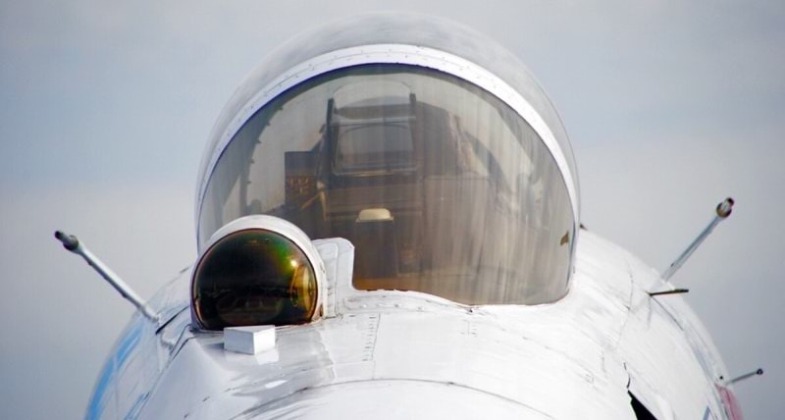Since its entry into service in 2014 the Russian Su-35 has gained a reputation as a ‘4++ generation’ fighter well optimised for engaging fifth generation stealth aircraft, with the ability of its sensors to do so having been widely highlighted. These include its Irbis-E radar, which can reportedly track very low observable stealth targets up to 90km away, as well as the twin AESA radars in its wing roots which operate in the X band in which stealth capabilities are less effective. A lower profile and less widely discussed fourth sensor which could potentially prove decisive is the OLS-35 infra red search and tracking system (IRST). The Soviet Union pioneered the widespread use of such systems on its frontline fighters in the 1980s when they were introduced on its MiG-29 and Su-27 fourth generation fighters, with the Su-35 as an enhanced Su-27 derivative inheriting this capability but improving on it considerably. Where the Su-27’s OLS-27 IRST had a 50km detection range against enemy aircraft from the rear, the OLS-35 improves on this by 80 percent with a 90km detection range. This mirrors how the Su-35’s main radar the Irbis-E’s 400km detection range against 3 square metre targets improved tremendously on the Su-27’s N001 radar’s 80km detection range.

Infrared search and tracking systems provide fighters with a range of benefits including the ability to maintain situational awareness without using any radars and thus operate with zero radar signature. This is particularly useful for stealth fighters, but also has some uses for fourth generation aircraft like the Su-35. IRSTs are also not prone to jamming as radars are, and are well optimised to tracking stealth targets which, although having reduced heat signatures, can reduce these less drastically than they can their radar signatures. Mirroring the Su-35’s prior integration of this feature for the same role, the adoption of the IRST onto new variants of U.S. Navy’s F-18E/F Super Hornet fourth generation fighters was similarly put forward as a measure to allow it to more easily tackle enemy stealth aircraft.
Able to monitor and follow up to four separate aircraft simultaneously, the OLS-35 IRST also integrates a laser rangefinder capable of operating against both aerial and surface targets, and can be used to designate ground targets for laser guided weapons. The system has been tested on multiple occasions against Western fifth generation fighters – most notably the American F-22 Raptor over Syria which the Su-35 was developed specifically to counter. Images show Su-35s using the IRSTs to form clear locks onto F-22s, representing one of many ways in which, in the words of U.S. Air Force General VeraLinn Jamieson, operations near F-22s in the theatre provided Russia with a “treasure trove of information” on how American air units operated. IRSTs are expected to remain a major feature on all Russian fighter classes, with the Su-35’s successor the Su-57 integrating one as a seventh sensor alongside is six AESA radars.
